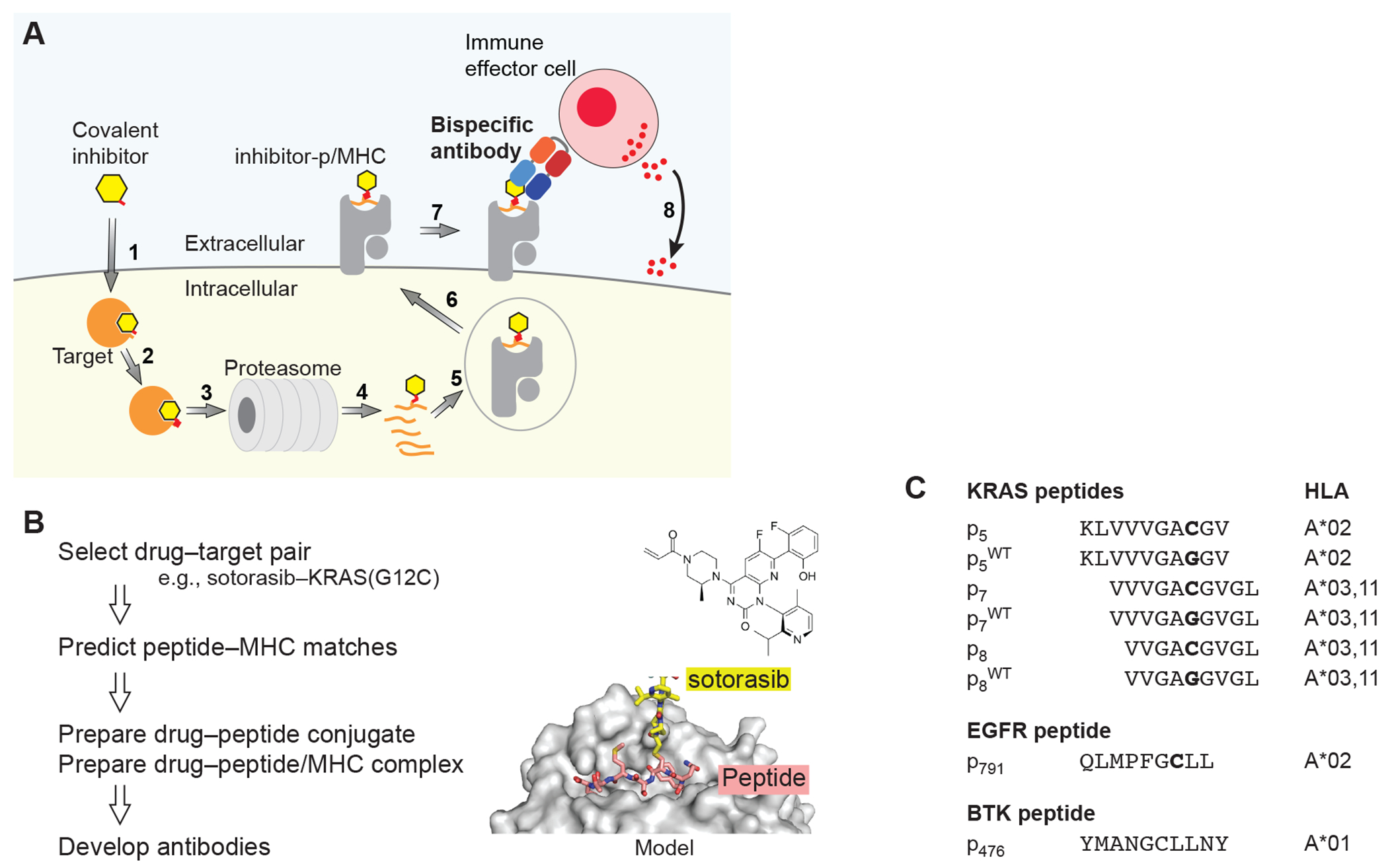Figure 1.

The HapImmune™ concept. (A) A covalent inhibitor enters the cell (step 1) and binds and forms a covalent bond with its target (2). As a part of natural protein turnover, the target-drug conjugate is degraded, and peptides with the conjugated drug are produced (3, 4). A drug-peptide conjugate is incorporated into a compatible MHC molecule (5). The drug-peptide/MHC complex translocates to the cell surface (6). A HapImmune™ antibody binds the complex (7) and recruits an immune effector cell, which initiates cell killing (8). Alternatively, the HapImmune™ antibody can serve as the recognition element for antibody conjugates or cellular therapies. (B) Overview of antibody development strategy. The molecular model was based on PDB ID 3RL1 (67). (C) Peptides used in this study and their predicted HLA matches.
